
Streamlining App Configuration with Azure App Configuration and Key Vault Integration
Managing app settings and secrets efficiently can become annoying and insecure pretty quickly, especially for local development environments. Azure App Configuration combined with Azure Key Vault offers an elegant solution that not only simplifies configuration management but also enhances security and developer productivity.
In this blog post, we’ll explore how Azure App Configuration and Key Vault can be leveraged to streamline our app’s configuration management and secure our sensitive information. They integrate so seamlessly that it would be a shame not to use them together!
Time to take a quick look at what both of these Azure services do exactly:
Why Use App Configuration?
Imagine a development environment where:
- Feature flags and app settings are shared across teams without manual file exchanges.
- Developers can onboard faster by skipping the “send me your appsettings.json” step.
- Secrets (like API keys or connection strings) are stored securely without being exposed in plaintext files, even in our local development environment.
Azure App Configuration makes all this possible by acting as a central repository for our app’s configuration and feature management.
Securely Storing Secrets with Azure Key Vault
Secrets such as database credentials, API keys, and other sensitive information should never be stored in configuration files. That also means they shouldn’t be stored in Azure App Configuration. However, Azure Key Vault provides secure storage for these secrets.
By pairing Azure Key Vault with App Configuration, we gain centralized access to configuration values and secure secrets in one streamlined pipeline. Sounds good right?
Getting started: App Configuration and Key Vault Integration
First we’ll obviously need to create both an Azure App Configuration and Azure Keyvault. Once that’s done we need to set things up:
1. Centralize Configuration in Azure App Configuration
Store our app’s non-sensitive settings, such as feature flags, service URLs, or configuration toggles, directly in Azure App Configuration.
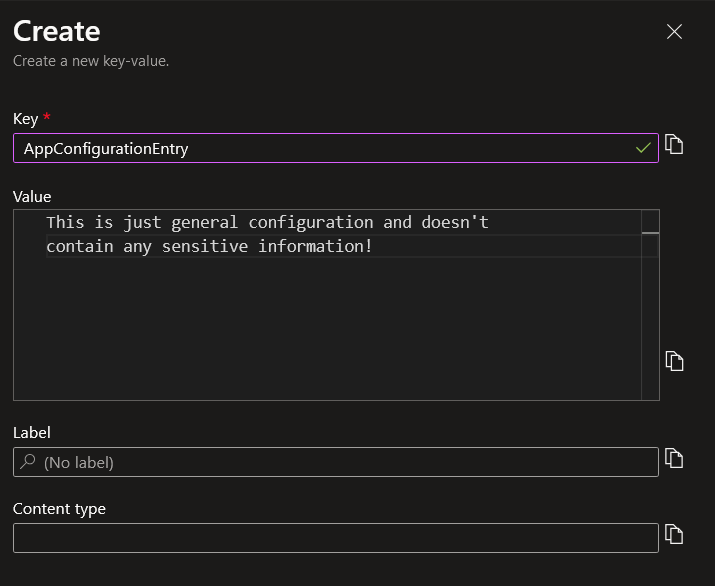
2. Secure Secrets in Azure Key Vault
Move sensitive information like connection strings or private keys into Azure Key Vault.
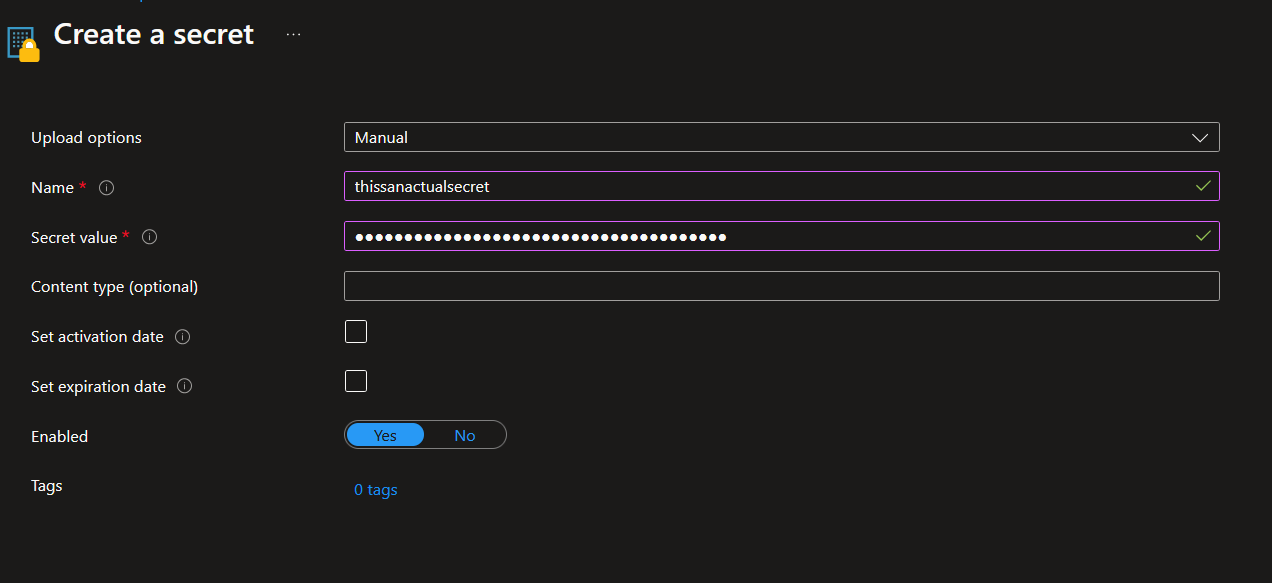
3. Grant Access with Managed Identity
Alright so we’ve used both services now, but we want to be able to get everything we need by just calling App Configuration. We don’t want our local dev environment to be able to access Azure Keyvault directly.
To do this, we first enable Azure Managed Identity on Azure App Configuration.
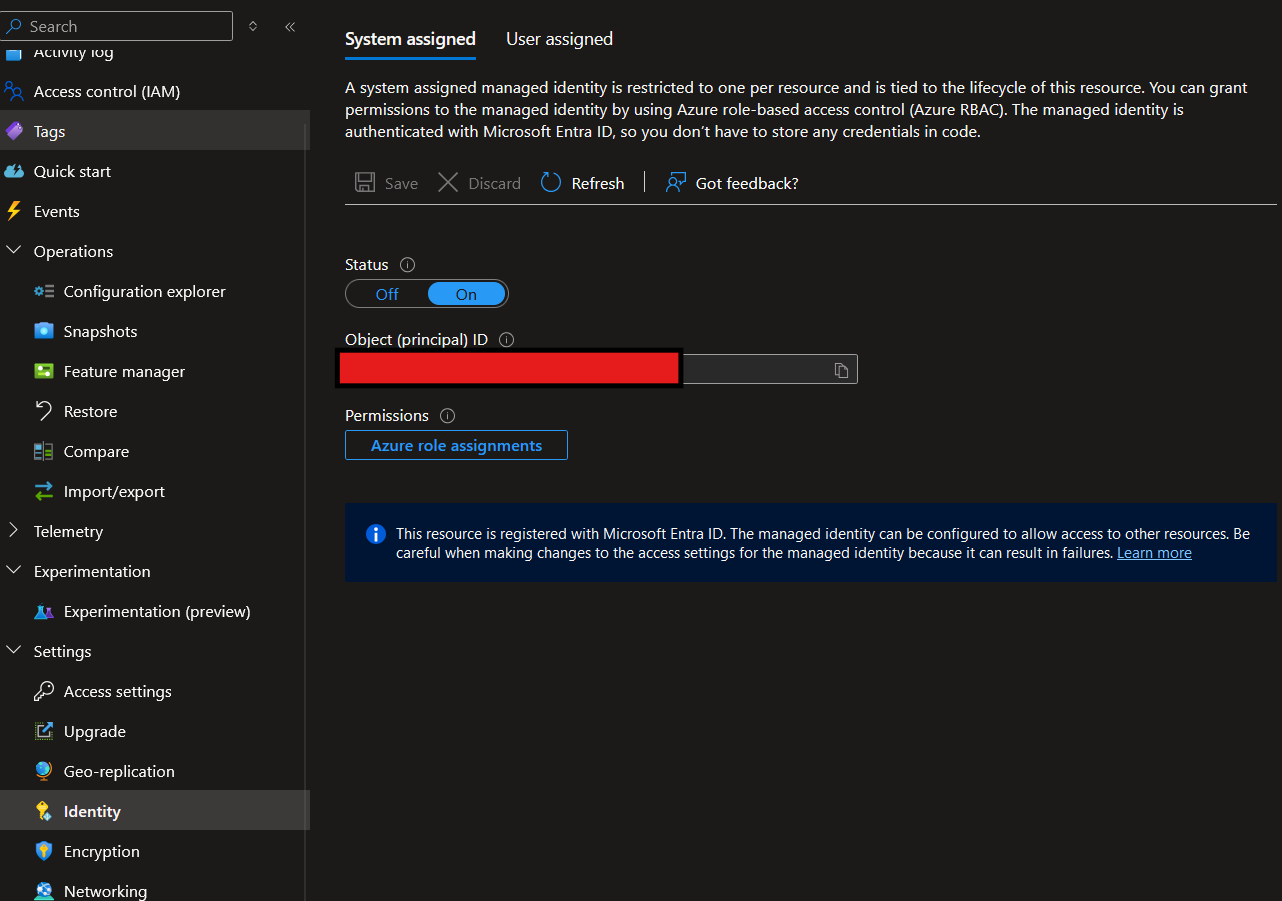 )
)
Then, we give that managed identity access to Azure Keyvault via the Key Vault Secrets User role.
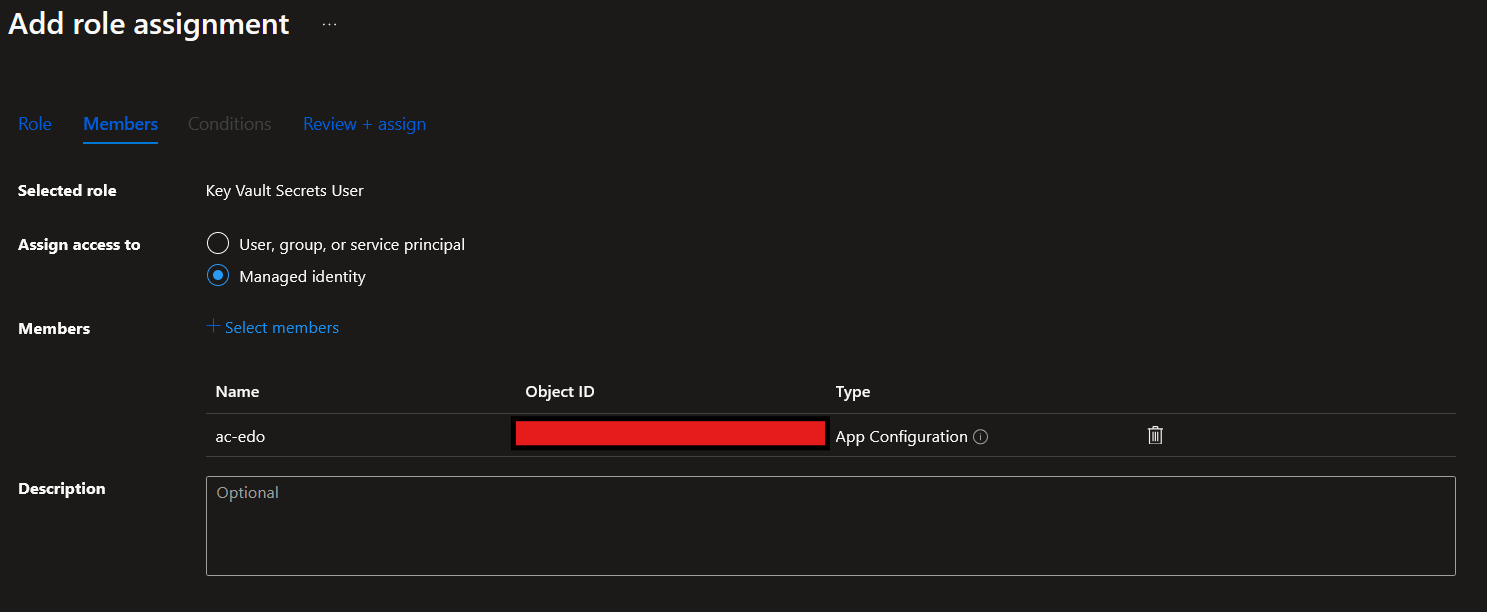
Finally, we can add the Azure Keyvault secrets to our Azure App Configuration by selecting Create and choosing the Keyvault Reference option.
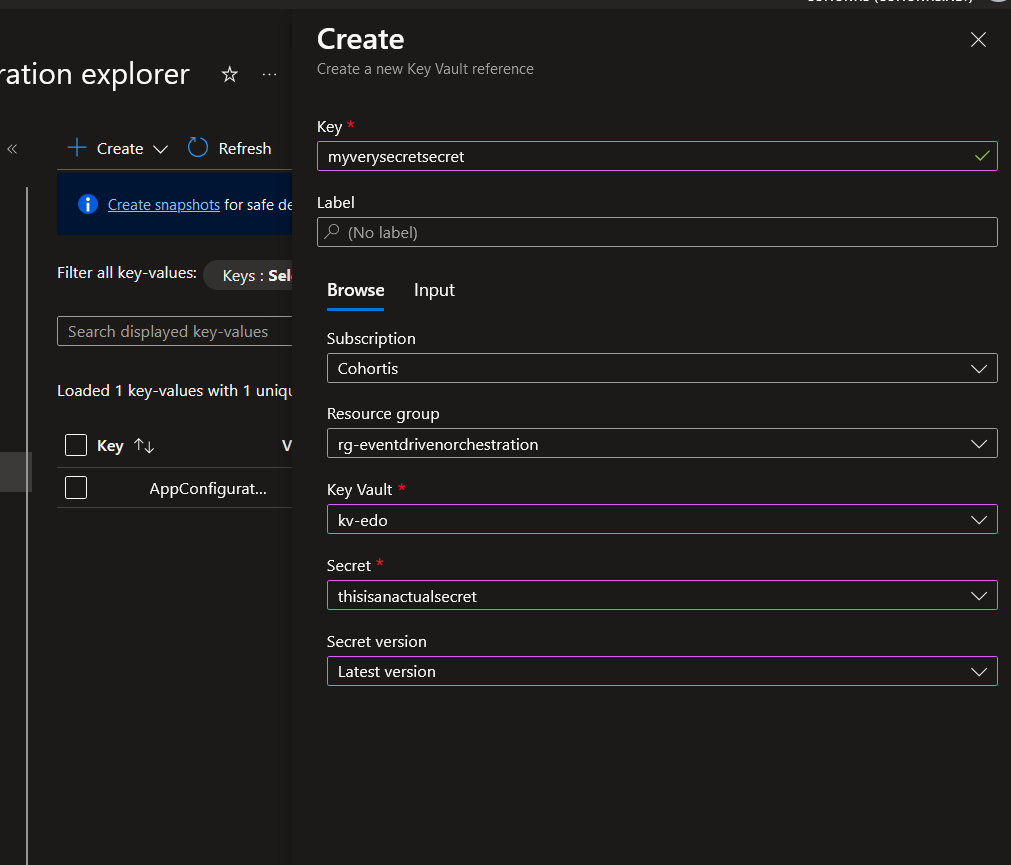
Done! That’s all the setup we need to do. Now we can add all the configuration and secrets we need to their respective services.
Loading Azure App Configuration into our local development environment
Finally, we need to connect to Azure App Configuration from our local development environment and load what we need.
For authentication, make sure you’re using Microsoft Entra ID to authenticate to Azure App Configuration and not a connection string. Using a connection string basically invalidates the entire security aspect of setting all this up. It’s a big no-no!
That being said, I’m not going to detail all the steps to get things working locally. Instead, I recommend reading the Microsoft documentation at https://learn.microsoft.com/en-us/azure/azure-app-configuration/quickstart-aspnet-core-app?tabs=entra-id for this part (they’re better writers than I am, trust me).
A Future-Proof Solution
By integrating Azure App Configuration with Azure Key Vault, we’re setting up a scalable and secure framework for managing app configuration. This approach not only simplifies local development but also lays the foundation for robust and secure configuration management across environments.
So, say goodbye to juggling appsettings.json files and start our journey with Azure App Configuration and Key Vault today!
Thanks for reading! If you would like to stay up-to-date with my blog, consider subscribing to the codecrash newsletter. You'll receive an email whenever I publish a new article.